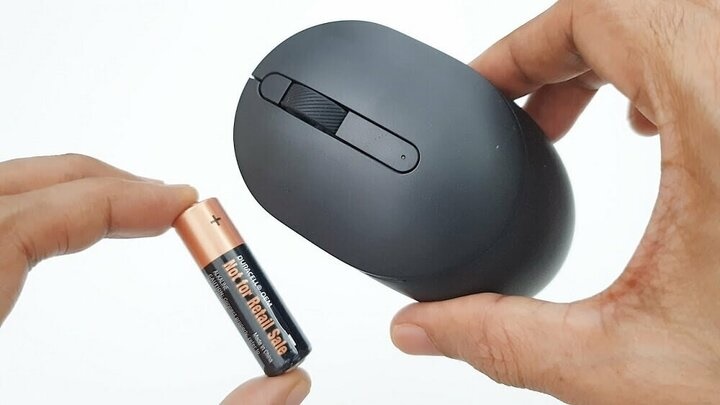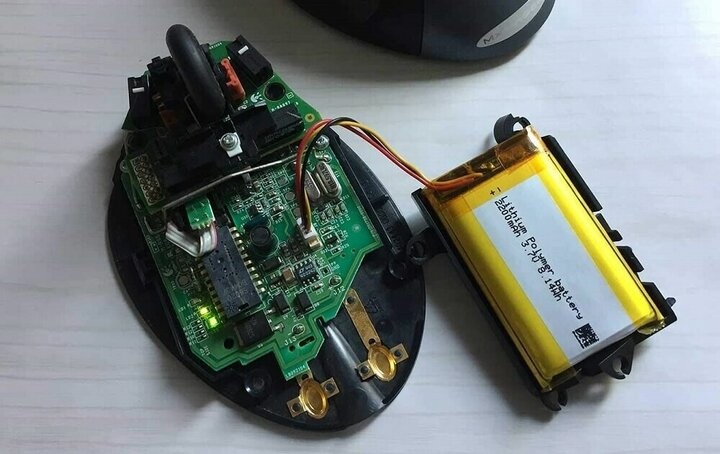There are two types of wireless mice, those that use replaceable batteries and those with integrated batteries. This makes it difficult to choose between them.
To address this issue, the best approach is to learn about the specific differences between them before making a purchase.
Wireless mouse with replaceable batteries
Mice that run on replaceable batteries are commonly found in low-end models, some mid-range models, and rarely in high-end mice. Mice that run on replaceable batteries have their strengths as well as some drawbacks.

A wireless mouse with replaceable batteries.
The advantages of this type of battery are:
– Lightweight: Typically, these mice are focused on laptops and often carry two AAA batteries or one/two AA batteries.
– Good battery life: Mice that run on batteries typically offer long usage times because they are usually simple mice without RGB lighting and other power-consuming features.
– Affordable: Since they do not have integrated batteries, their cost is much lower, as they do not include a charging circuit. However, users will have to spend more money on batteries after each replacement.
The drawbacks of this type of battery are:
– High pollution: The use of AAA or AA batteries means that this type of mouse is more environmentally polluting. Many people choose not to use this type of mouse because of the toxicity it can cause to the environment.
– Lack of premium solutions: Most mice that use replaceable batteries are mid-range or low-end models, while high-end models are very rare. For this segment, it is better to choose a mouse with integrated batteries.
Wireless mouse with integrated batteries
Another option on the market is a wireless mouse with integrated batteries or rechargeable battery technology. It also has its own advantages and disadvantages that users should be aware of before making a choice.

A wireless mouse with integrated batteries.
Advantages:
– Improved performance: Since this type of battery is used for mid-range or high-end models, they often come with better electronics, sensors, and related technologies.
– Lower environmental impact: By providing continuous battery rechargeability, their batteries will not be quickly discarded. Users can use the mouse for a long time without any issues.
– Simple charging: When the battery is low, you can connect a cable and charge the mouse easily, just like charging a phone. Some high-end models even have wireless charging capabilities through special charging pads.
Disadvantages:
– Lower battery life: They usually have less usage time compared to mice that run on replaceable batteries. This is because integrated batteries are typically smaller in size and often have to power RGB lighting. Therefore, the usage time is significantly reduced, down to 100 – 150 hours.
– Higher cost: The cost of a mouse with integrated batteries is higher because they often come with higher-end sensors and require specific electronics to enable mouse charging. In particular, wireless charging models are even more expensive.
– Battery degradation: Over time, the battery will deteriorate and lose capacity. After about 2 – 3 years, we will start to notice a decrease in usage time.
After analyzing the strengths and weaknesses of each type of mouse, you probably have your own choice when buying a wireless mouse. The most important thing is still your usage needs and habits.
If you have a limited budget but still want a good experience, choose a wireless mouse with replaceable batteries. If you are environmentally conscious and don’t want to replace batteries frequently but simply need to plug in and charge, choose a wireless mouse with integrated batteries.
According to VTC news


































